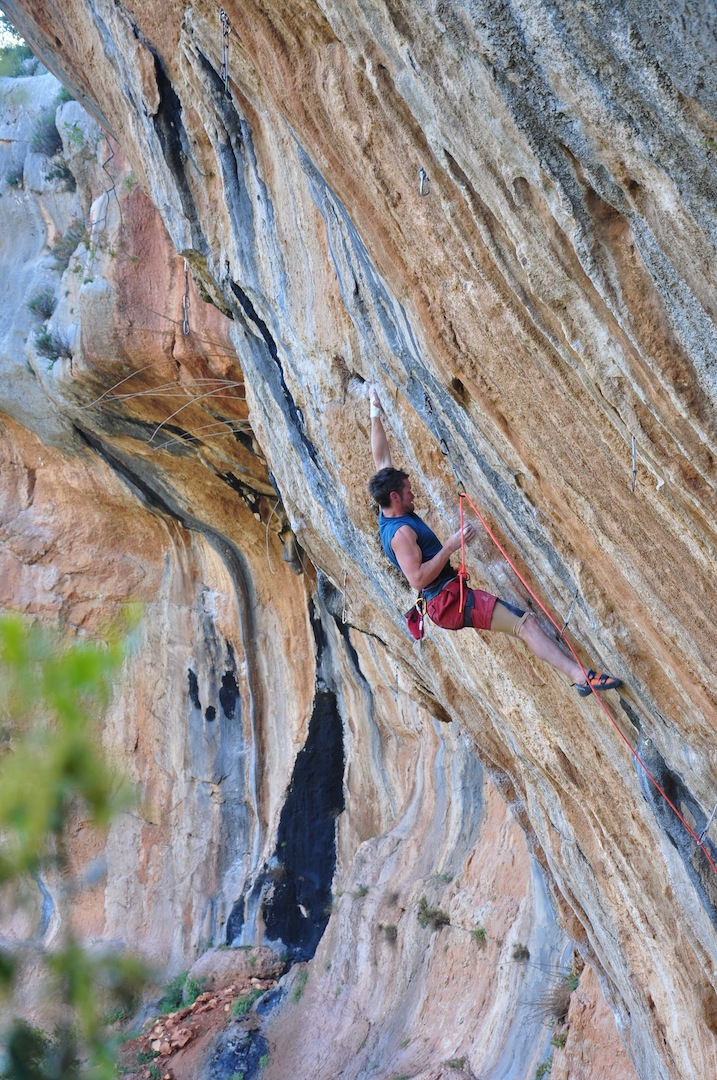Tannourine el Tahta
Lebanon
 Lebanon isn’t the first place that comes to mind for rock climbing—it’s better known for beaches, nightclubs, and the threat of instability. The Lebanese civil war (1975–1990) and ensuing turbulence have kept tourists away and limited the development of climbing areas. We first visited in 2011 to retrace family roots, and we went climbing one weekend at Harrisa Tannourine, a crag established by the French military at the turn of the millennium, with about 40 bolted routes.
Lebanon isn’t the first place that comes to mind for rock climbing—it’s better known for beaches, nightclubs, and the threat of instability. The Lebanese civil war (1975–1990) and ensuing turbulence have kept tourists away and limited the development of climbing areas. We first visited in 2011 to retrace family roots, and we went climbing one weekend at Harrisa Tannourine, a crag established by the French military at the turn of the millennium, with about 40 bolted routes.
On our way back, we stopped for a beer in a village dominated by immaculate limestone walls no one had ever thought to climb—or so we thought. In fact, the cliffs around Tannourine sheltered early Christian monks from religious persecution and offered solitude to hermits for centuries.
We gazed up at the striking walls, ranging from 20m to 150m, in a band stretching up to the cedar line. There was potential for all styles of limestone routes, from technical blue-gray faces to caves with orange stalactites. We dreamed about it for a year before we could return, get permission from the municipality, and install the first bolts in this crag, working with local Lebanese climbers. After nearly two years and many return visits with a few adventurous Welsh climbers, we’ve established more than 50 bolted lines.
The first route to the top of the wall (100m, 6a, 6b, 6a+, May 2013) is named after Georges Massoud, a local hero who climbed barefoot across exposed faces to hunt for quails to feed his family. His descendants still live at the base of the cliff. Not a day went by without them calling for us to come sit with them on the terrace for coffee, walnuts, or oranges as we lumbered up the hill with our gear.
In the summer months, Tannourine village sees busloads of day-trippers escaping the heat of Beirut for the cooler air of the mountains. They come in droves to restaurants along the river for leisurely lunches of mezze, washed down with locally produced arrack. As well as raising the bar for local climbers, we hope to extend the season for local businesses by attracting foreign climbers. So far, it is the small local climbing community and groups of aid workers on breaks from the Syrian crisis who have frequented the Olive Grove or five other climbing sectors established at Tannourine.
Tannourine el Tahta is at about 1,000m above sea level, and spring and autumn are the best times to go. The cliff is visible from the road into the village; park just after the Roman aqueduct. (Taking care to preserve historic sites such as the 800-year-old Hermitage of Saint Jacob, there are no routes in areas of archaeological interest.) You can camp in the lowest field next to the parking; you must get permission from the landowner before setting up. Please don’t camp on the private land below the Olive Grove sector. There is a great restaurant called Two Rivers about 100 yards up from the parking. They are building a guesthouse that should be open by spring of 2014. Accommodation also can be found in Douma, known as the most beautiful village in Lebanon. Alternatively, you can stay on the coast in Byblos, which has incredible Phoenician ruins and a Crusader castle. Another good crag is located in Amchit, just 10 minutes from Byblos.
Our website, www.R-A-D.org, has topos, maps, photos, and useful information about traveling to Lebanon, including the relative safety of various areas. (Always note official travel warnings and stay up on current events.) R-A-D, the Rock Climbing Association for Development, helps communities harness local climbing potential for tourism, creating long-term economic gains. We have established routes for R-A-D in Oregon, Armenia, Jordan, Madagascar, and Lebanon.
Will Nazarian and Katy Anderson, R-A-D.org







